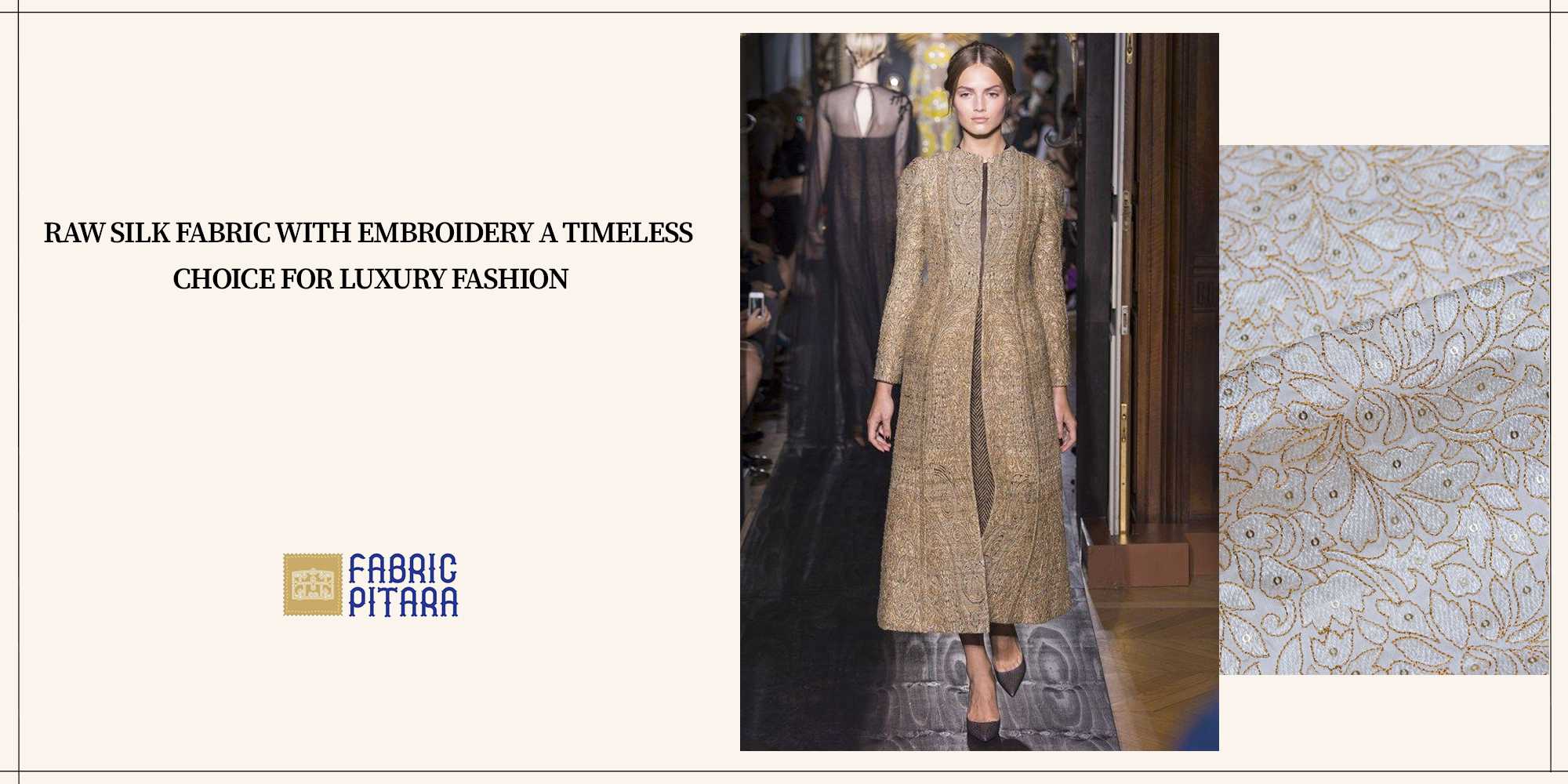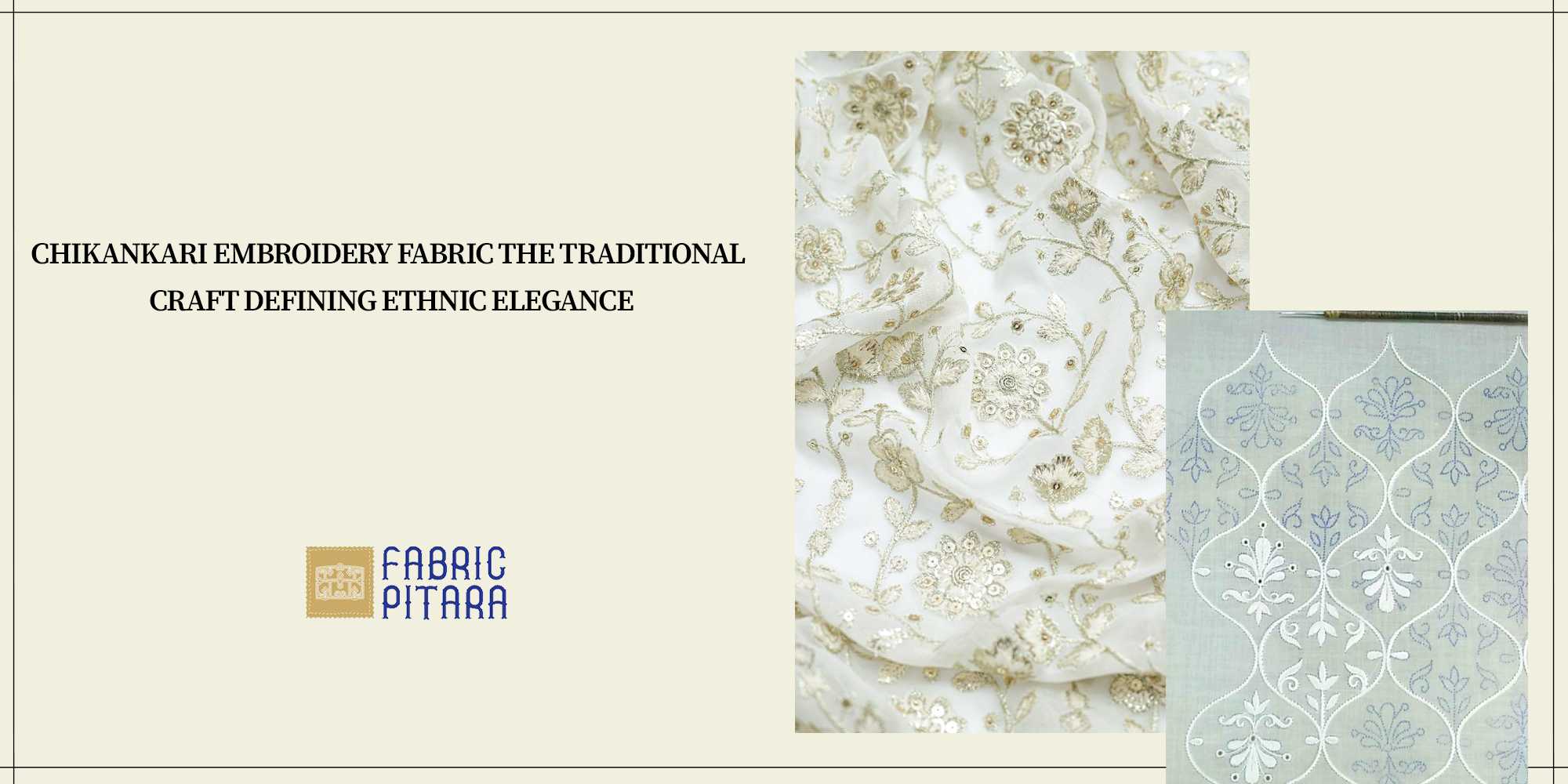
In the dynamic world of fashion, 2023 marks a remarkable year characterized by a paradigm shift towards sustainability. The fashion industry is undergoing a profound transformation, with consumers and brands alike embracing eco-consciousness and ethical practices. Within this sweeping wave of change, embroidered fabrics are emerging as an emblematic choice for those seeking a harmonious blend of style and sustainability.
Embroidery: A Timeless Craft Redefined
Embroidery, an age-old craft with roots stretching back through history, has always held a special place in the world of fashion. This meticulous art involves adorning fabric with intricate patterns, designs, and motifs using a needle and thread, resulting in visually captivating and textured textiles. Historically associated with opulence and luxury, embroidery is now being
redefined as a symbol of sustainable fashion.
The Sustainability Imperative in Fashion
The fashion industry has faced mounting criticism for its environmental and social impacts. From water pollution caused by dyeing processes to the exploitation of labor in garment factories, the industry's practices have come under scrutiny. The call for sustainability has never been louder, prompting both consumers and fashion brands to prioritize ethical sourcing, responsible production, and eco-friendly materials.
Embroidered Fabrics: A Sustainable Choice
Fabric embroidery are gaining recognition as a sustainable option for several compelling reasons:
1. Natural Fiber Foundation: Embroidered fabric often begin with natural fibers like cotton, linen, hemp, and silk. These materials are biodegradable and have a significantly lower environmental footprint compared to synthetic alternatives derived from petrochemicals.
2. Artisanal Craftsmanship: Many embroidery techniques are labor-intensive and require skilled artisans to create intricate patterns by hand. This not only preserves traditional craftsmanship but also supports fair labor practices, aligning with the principles of sustainable fashion.
3. Versatile Design Aesthetics: Embroidery cloth offers boundless design possibilities, ranging from delicate floral motifs to bold geometric patterns. This versatility allows for personalization and customization, ensuring that each embroidered garment is unique and meaningful.
4. Durability and Longevity: High-quality embroidery enhances the strength and durability of fabrics, extending the lifespan of garments. In contrast to fast fashion, where clothing is often discarded after only a few wears, embroidered pieces are built to last, contributing to reduced textile waste.
5. Upcycling and Repurposing: Embroidered fabric lend themselves well to upcycling and repurposing initiatives. Old embroidered pieces can be transformed into new creations, reducing waste and conserving resources.
6. Natural Dye Usage: In line with sustainability principles, many embroidered fabrics are dyed using natural, plant-based dyes. These dyes are less harmful to the environment compared to synthetic counterparts.
The Impact of Embroidered Fabrics in 2023
As we journey further into 2023, embroidery cloth are poised to make a substantial impact on sustainable fashion trends:
1. Ethical Luxury: Embroidered fabrics have become synonymous with ethical luxury. Designers and brands are incorporating these textiles into their collections, appealing to consumers who seek both style and sustainability in their clothing choices.
2. Bohemian Revival: The bohemian fashion trend is experiencing a resurgence, with embroidered fabric taking center stage. Flowing dresses, blouses, and tunics adorned with embroidery evoke a relaxed yet stylish vibe.
3. Customization and Personalization: In an era celebrating individuality, embroidered fabrics offer a canvas for personalization. Many consumers opt for bespoke embroidery on their clothing, creating garments that reflect their unique tastes and stories.
4. Bridal Couture: Bridal fashion is also embracing embroidered linen fabric, Georgette and raw silks. Wedding gowns featuring intricate embroidery are captivating eco-conscious brides who want to make a sustainable statement on their special day.
5. Sustainable Collaborations: Collaborations between sustainable fashion brands and skilled embroidery artisans are on the rise. These partnerships celebrate craftsmanship while offering eco-friendly clothing choices to consumers.
6. Vintage Revival: Vintage embroidered pieces are highly sought after, and fashion enthusiasts are scouring thrift shops and vintage boutiques for unique finds. This trend not only promotes sustainability but also evokes a sense of nostalgia.


Stitching Sustainability into Style
As the sustainable revolution continues to gain momentum, fabric embroidered stand as a symbol of the fashion industry's commitment to positive change. These textiles offer a harmonious blend of tradition, artistry, and sustainability. In 2023, they are poised to play a significant role in the world of eco-friendly fashion, captivating consumers with their timeless allure and ethical values.
Choosing to embrace embroidery cloth isn't just a fashion statement; it's a conscious decision to support environmentally-friendly practices and promote a more sustainable future for the fashion industry. As we embark on this journey into eco-conscious style, embroidered fabrics will continue to weave their way into our hearts and wardrobes, leaving a lasting impression of elegance and responsibility.
In a world where fashion meets responsibility, embroidered fabrics are at the forefront of a sustainable sartorial revolution, proving that style and ethics can seamlessly coexist in the tapestry of modern fashion. As we look ahead to the future of fashion, the sustainable revolution embodied by embroidered fabrics promises a brighter, more eco-friendly, and more stylish tomorrow.







